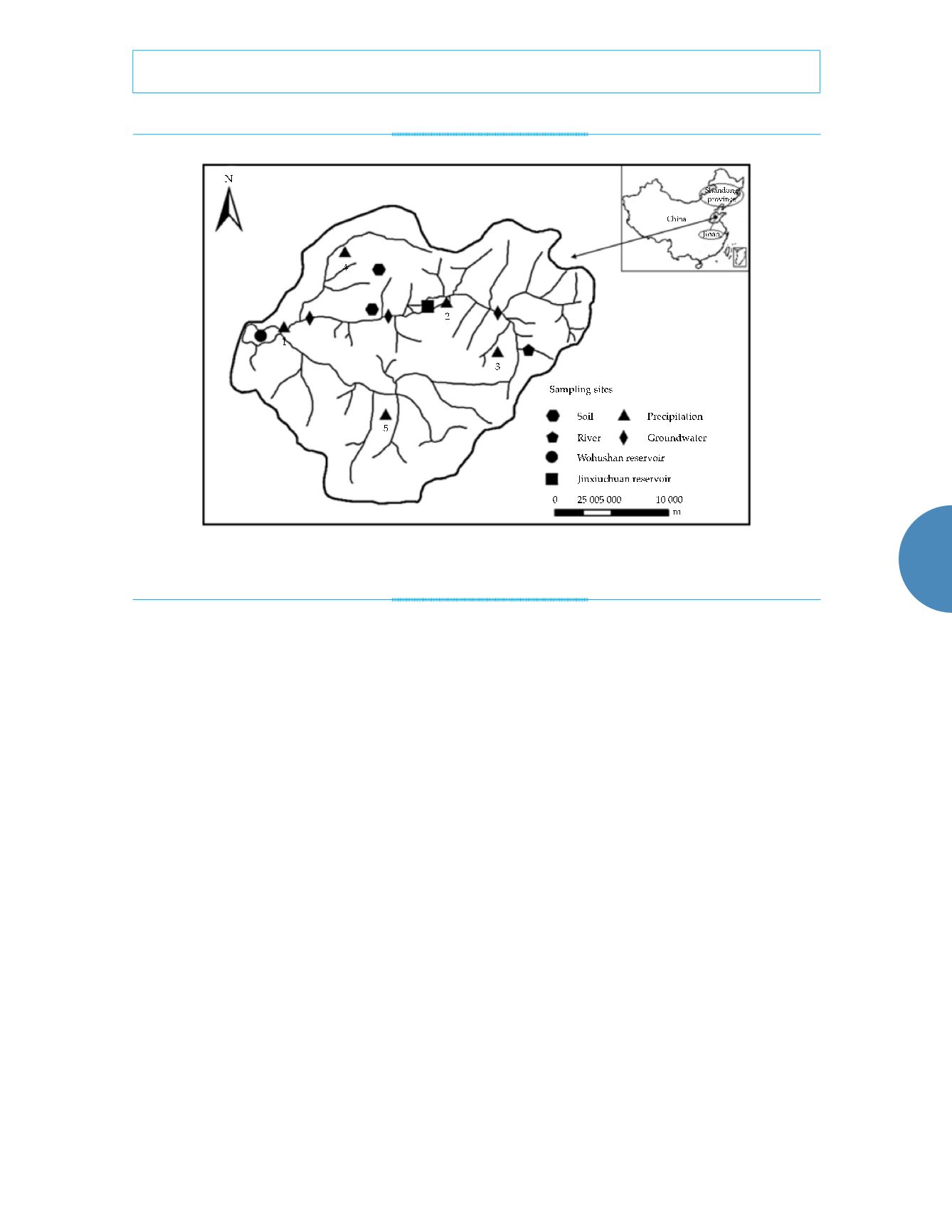
107
Tecnología y Ciencias del Agua
, vol. VIII, núm. 2, marzo-abril de 2017, pp. 105-115
Wang
et al
.,
Research on the hydrologic cycle characteristics using stable isotopes of oxygen and hydrogen in the Jinxiuchuan Basin
ISSN 2007-2422
•
rainfall. The transitional seasons of spring and
autumn are both less than two months. The
Jinxiuchuan Basin’s climate is characterized by
spring the dry multi-winds, the winter snow.
The Jinxiuchuan basin basement is Archean
Taishan Group metamorphic rock, which terrain
slopes downward from the south to the north.
The rock stratum is monoclinic occurrence with-
out obvious folds. The basin mainly includes
Cambrian and Ordovician, which are limestone.
The surface dissolution is well developed with
karren, slot, dissolving fissure, and so on. It has
good connectivity, which can be propitious to
recharge groundwater in the Jinxiuchuan basin.
Sample collection and analysis method
Sampling methods
Water samples of precipitation, river water, soil
and groundwater, as show in figure 1, were
collected from July 2011 to July 2012. After
each precipitation event, rainfall samples in
all sites were collected, which were obtained
by rainwater tanks. In order to avoid isotope
fractionation, each rainfall sample was stocked
in a 150 ml sealed brown vial and placed in the
dark at a lower temperature.
To ensure the accuracy of water samples of
river and groundwater, the implementation
of sampling must strictly enforce accord-
ing to Assurance Manual of Environmental
Water Monitoring Quantity (China National
Environmental Monitoring Centre Assurance,
2010). Water specimens were collected by us-
ing polyethylene bottle of acid-washed. During
sampling procedure, firstly, the bottles were
washed three times by using raw water, then
samples were collected at the sampling sites. To
avoid the isotopic fractionation of the sample,
firstly, samples were collected below the surface,
then the air in the bottle was vented, and the
samples were stored in an airtight; finally, the
samples were sent to a laboratory to analyze
under refrigerated conditions.
According to characteristics of topsoil in
the Jinxiuchuan Basin, the soil samples were
collected from five different depths (0-10 cm,
Figure 1. The map of the study area and sampling sites (1 Zhonggong; 2 Jinxiuchuan watershed; 3 Ouchi; 4 Zhengjia; 5 Liubu).


